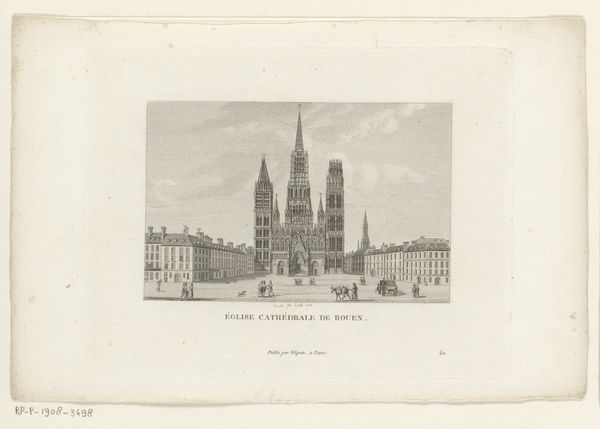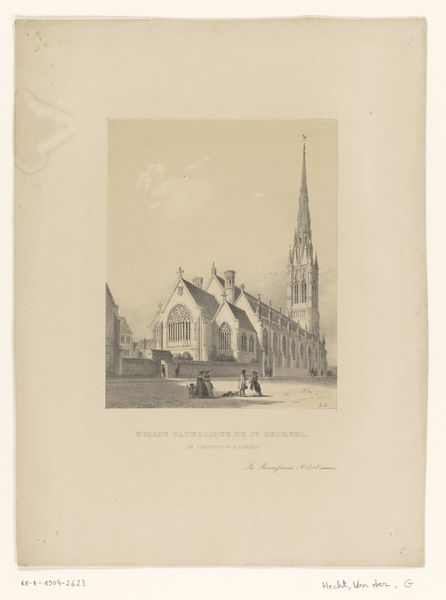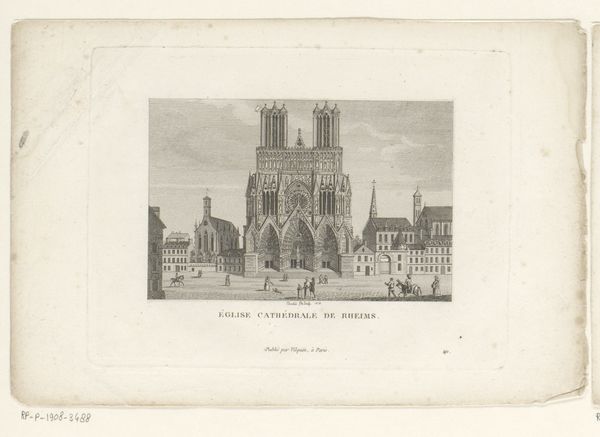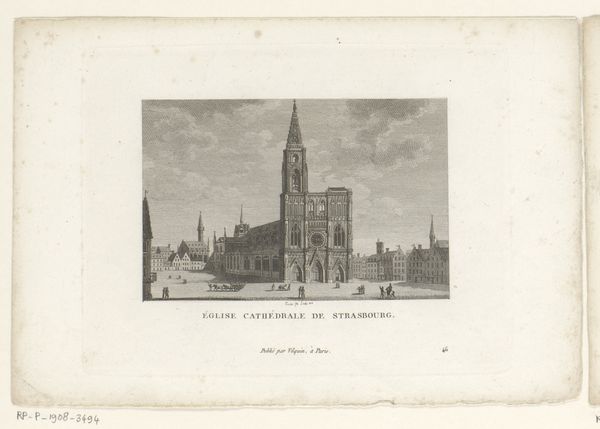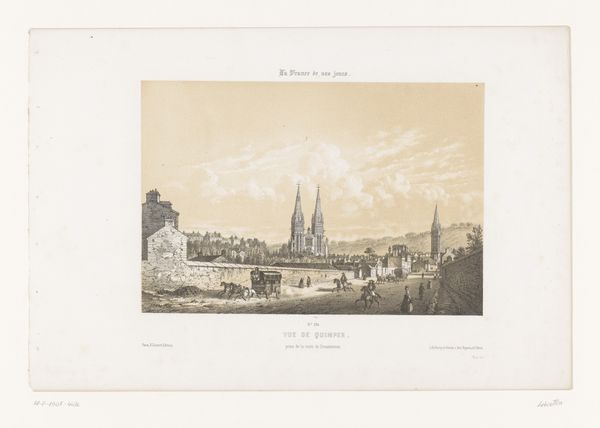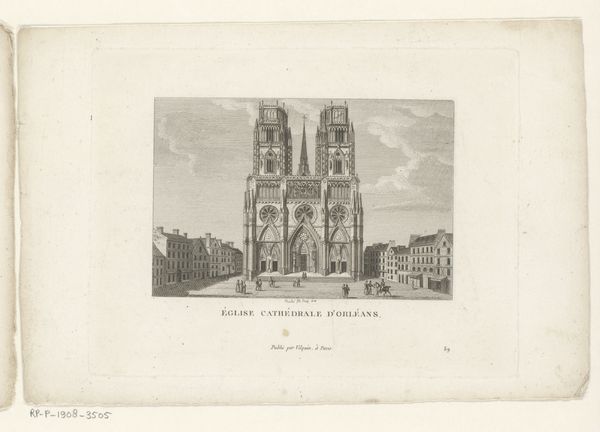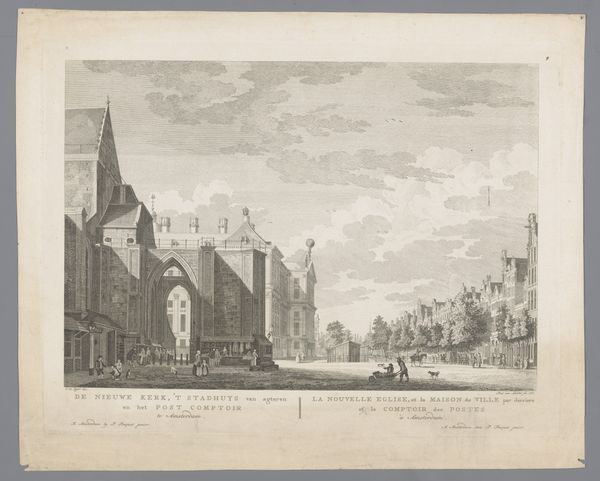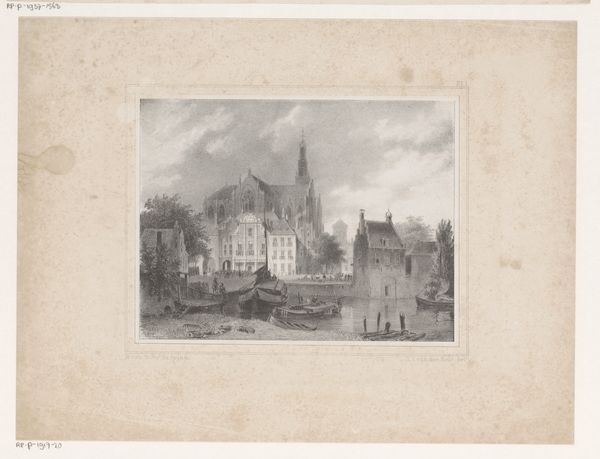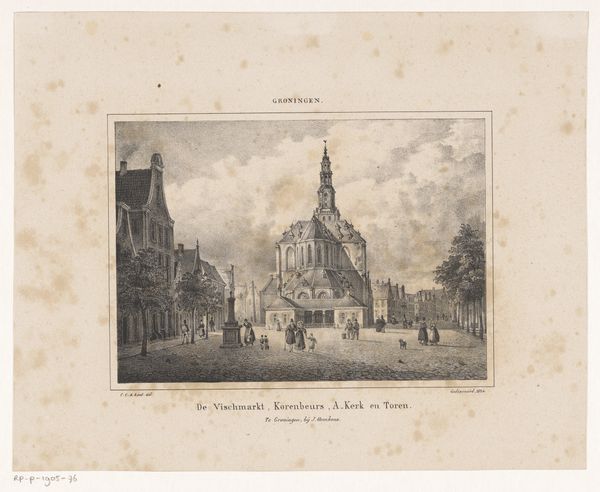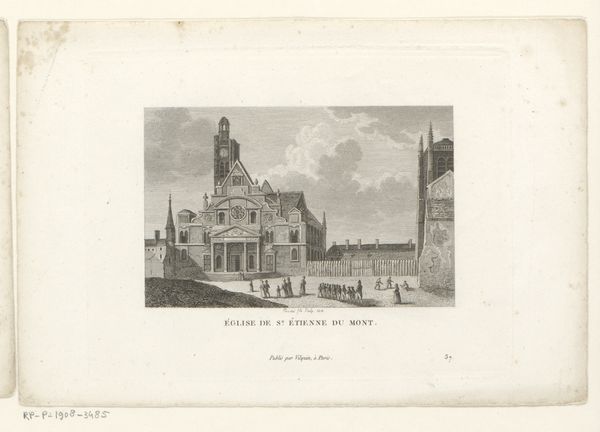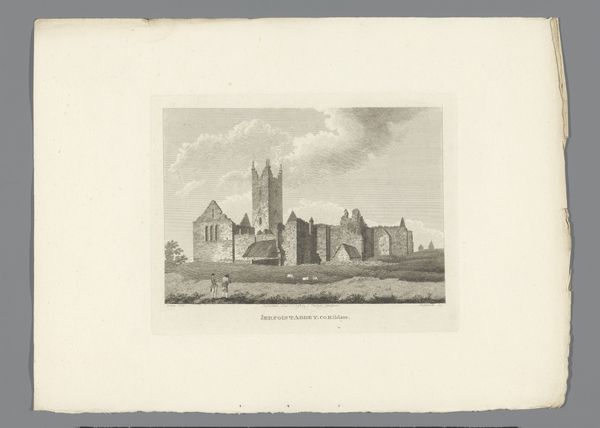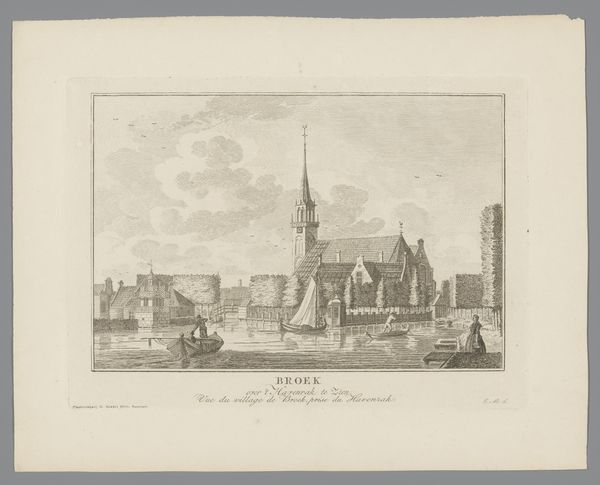
print, engraving, architecture
#
neoclacissism
# print
#
landscape
#
cityscape
#
engraving
#
architecture
Dimensions: height 125 mm, width 164 mm
Copyright: Rijks Museum: Open Domain
Editor: This is "Gezicht op de Kathedraal van Chartres," an 1818 engraving by François Louis Couché. It's such a precise rendering, almost architectural in its detail. It also seems...remote, like looking at a monument divorced from the lives of people. What do you see in this piece? Curator: I see the way Neoclassicism attempts to stabilize and control historical narratives through form and medium. This print isn't just a depiction of Chartres Cathedral; it's an assertion of order in a post-Revolutionary world, and a desire to create a direct continuity with what Europe considered the perceived order and aesthetic values of the classical past. Editor: That makes sense. I was so focused on the image itself, I missed how the choice of engraving contributes to that sense of control you mentioned. Curator: Exactly! Engraving allows for precise lines and detail, idealizing the structure, purging its complexities. How does this aesthetic preference then erase or suppress the layers of cultural and religious meaning imbued within the physical spaces by different people throughout time? Who are these spaces for, and what histories are highlighted versus those obscured? Editor: So, it’s not just about the beautiful building; it’s about the power dynamics embedded in how it’s presented and whose perspective is prioritized. Curator: Precisely. And consider how prints like these circulated. They became tools of cultural dissemination, standardizing the image of French heritage, contributing to a shared sense of national identity. This national identity often, both then and now, marginalizes other cultural expressions. Does recognizing that marginalization influence how you see it now? Editor: Definitely. It shifts from a straightforward depiction to something far more complex. Thanks to you, I now understand that, in order to view artwork of the past, we need to examine the narratives surrounding the art. It goes far beyond surface level. Curator: Agreed. We must never see art separate from its origins or intentions. Doing so helps to truly create meaningful context for any artwork.
Comments
No comments
Be the first to comment and join the conversation on the ultimate creative platform.
